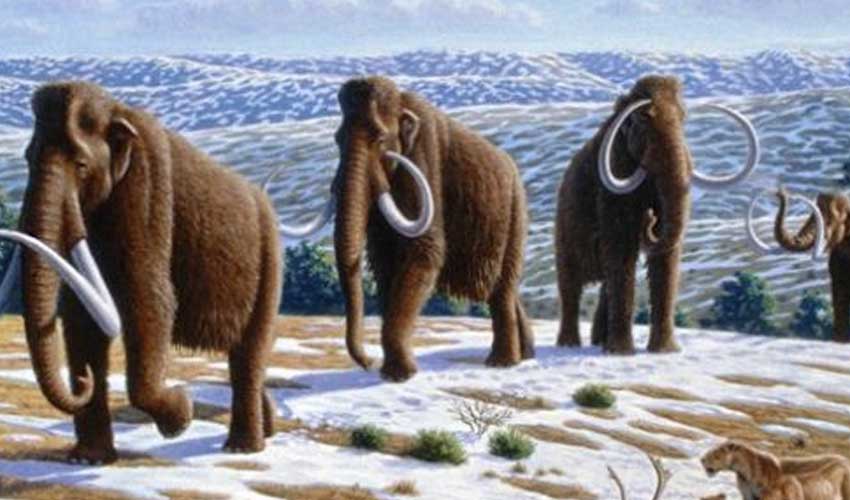Scientists discovered that the first humans in North America, belonging to the Clovis culture, relied heavily on mammoths and other large animals for survival during the last Ice Age, according to a new study.
Researchers analysed the chemical composition of the remains of an 18-month-old boy, known as Anzick Boy, found in southern Montana, to determine his mother’s diet.
Archeologist James Chatters explained, "Megafauna, particularly Columbian mammoths, provided huge packages of meat and energy-rich fat. One animal could sustain a community for days or weeks while hunters sought their next kill."
The study, published in the "Science Advances", revealed that megafauna constituted 96 per cent of the mother's diet, with mammoths accounting for 40 per cent.
Other large animals like elk, bison, camels, and horses made up the rest, with negligible contributions from smaller animals and plants.
The Clovis people, known for their large stone tools designed for hunting massive prey, appeared to focus on the largest animals available.
"Clovis people were highly sophisticated hunters, with skills refined over more than 10,000 years," Chatters added.
The findings supported the theory that human hunting played a role in the extinction of megafauna at the end of the Ice Age.
"These results help us understand megafaunal extinctions, indicating humans may have played a more important role than previously thought," said archeologist Ben Potter from the University of Alaska Fairbanks.
The isotopic analysis compared the mother’s diet to that of other predators of the era, revealing similarities to Homotherium, an extinct scimitar-toothed cat that also hunted mammoths.
The research highlighted how the Clovis culture’s dependence on megafauna enabled rapid expansion across North and South America, following prey migrations over vast distances.



























